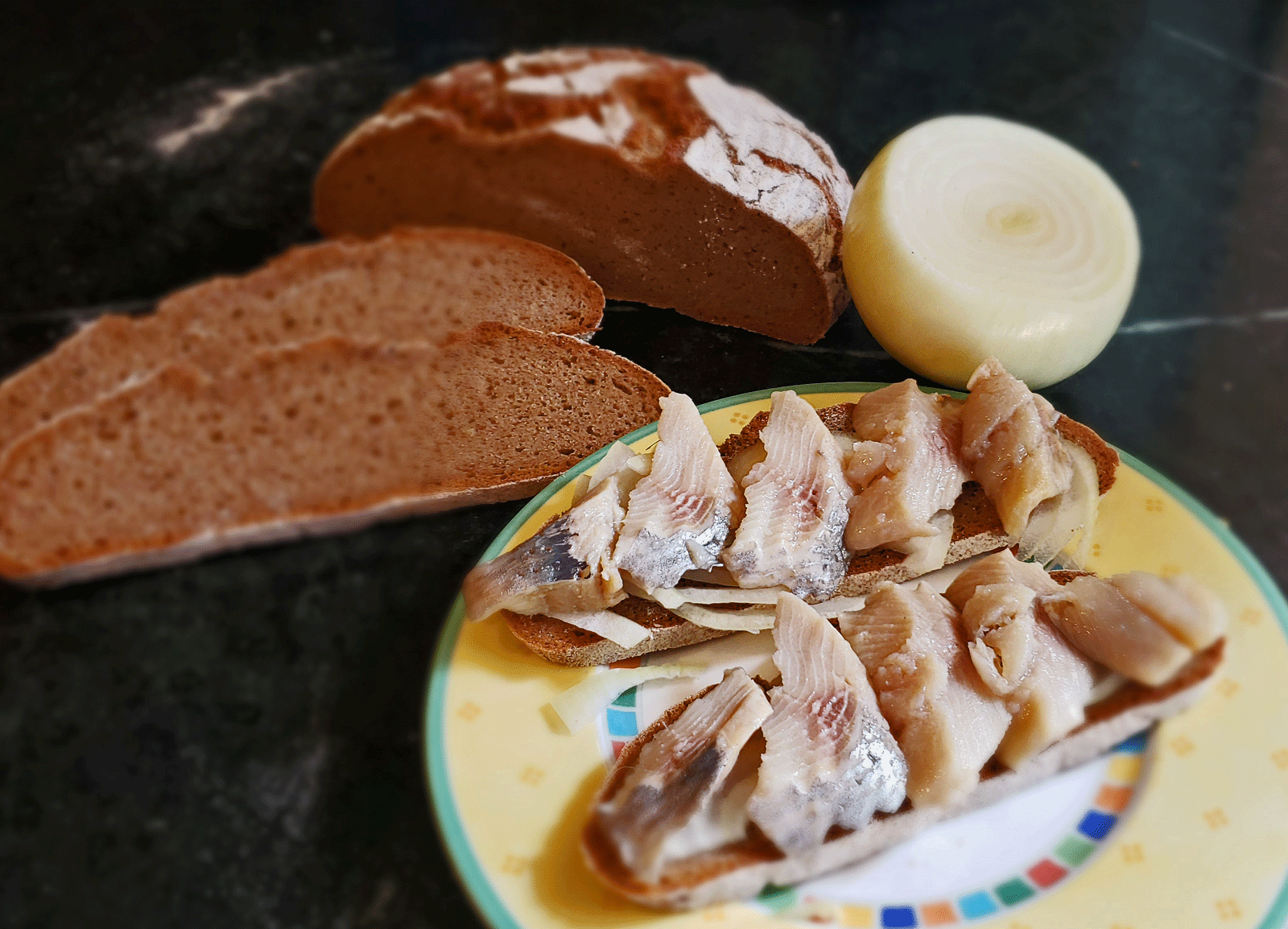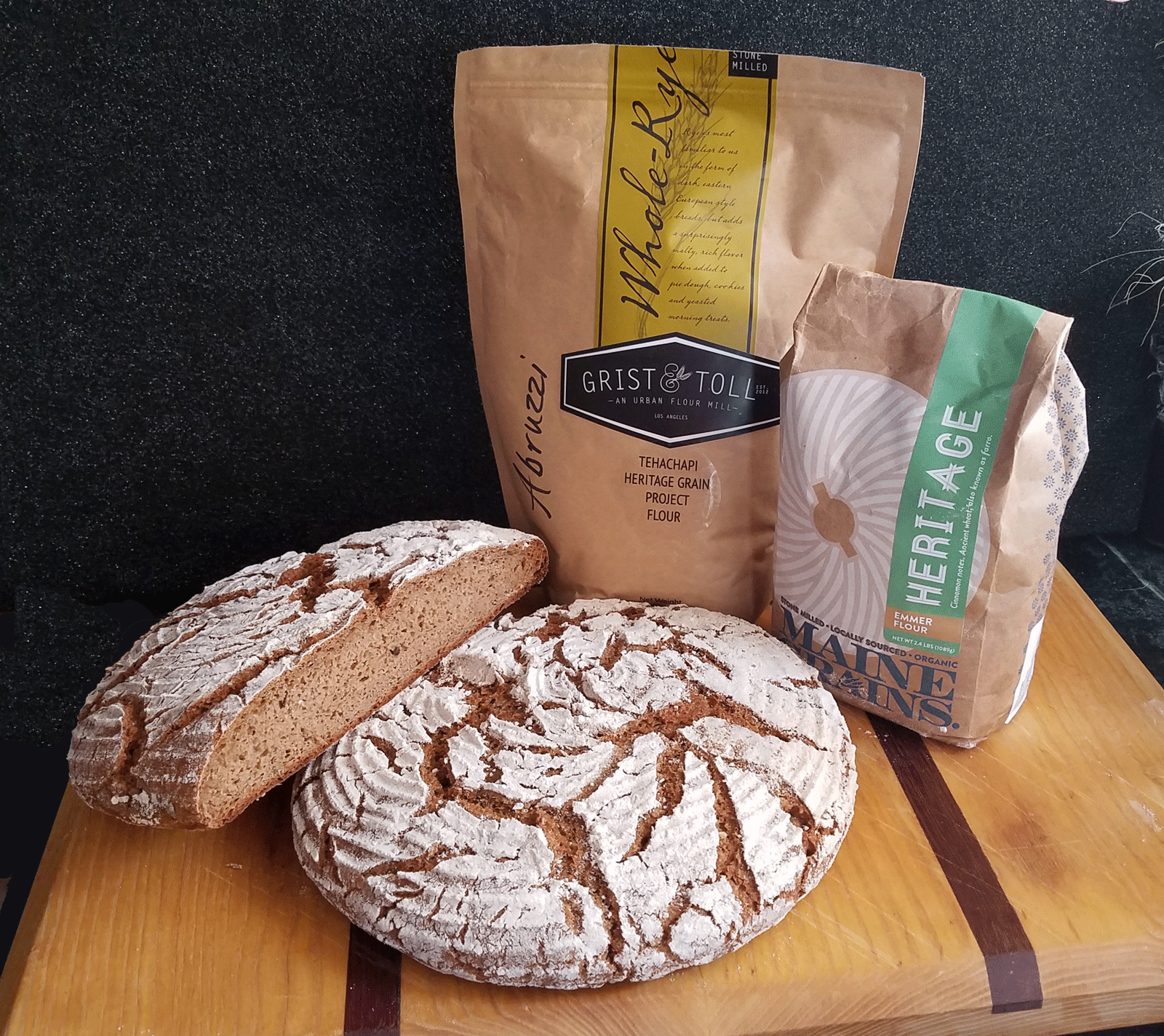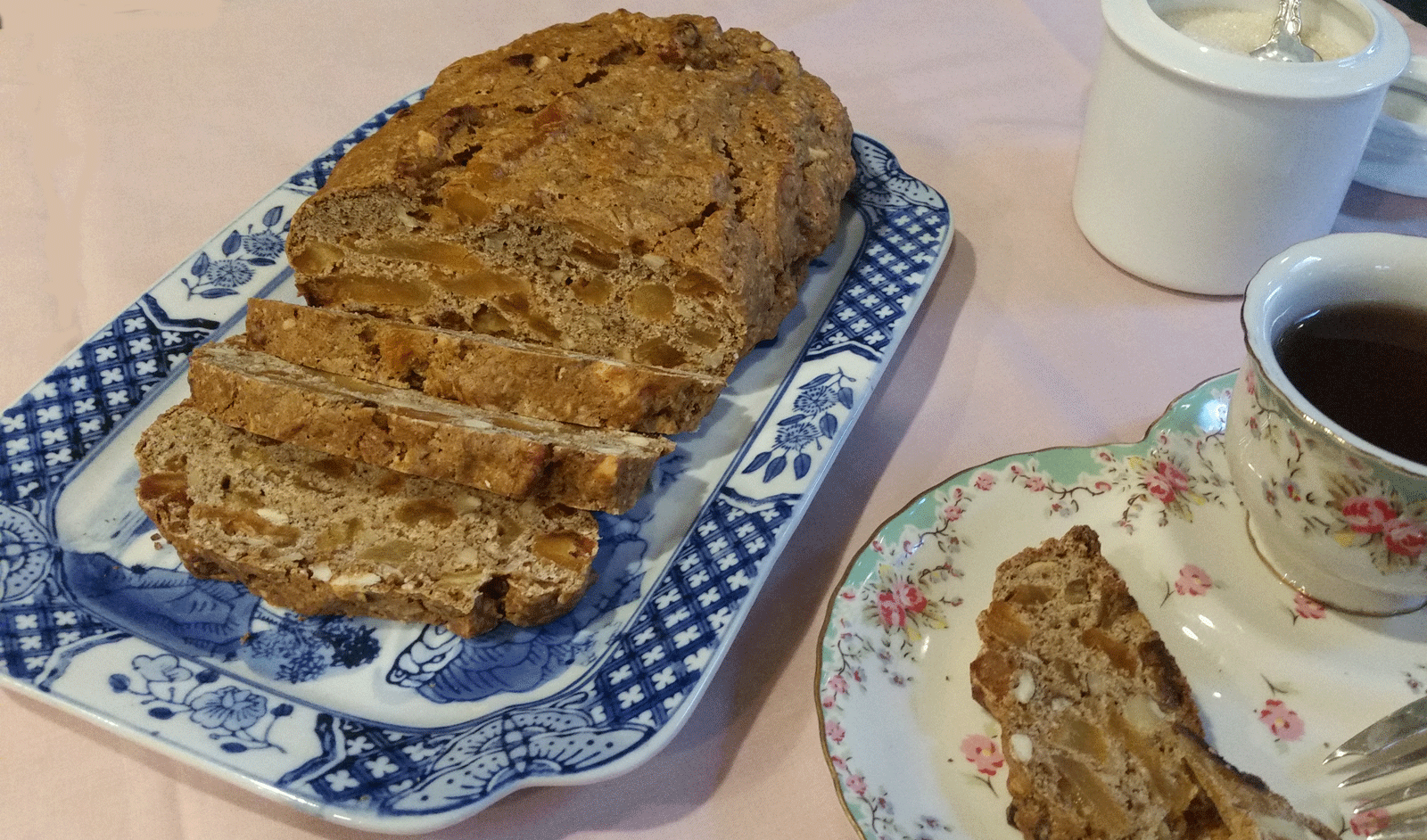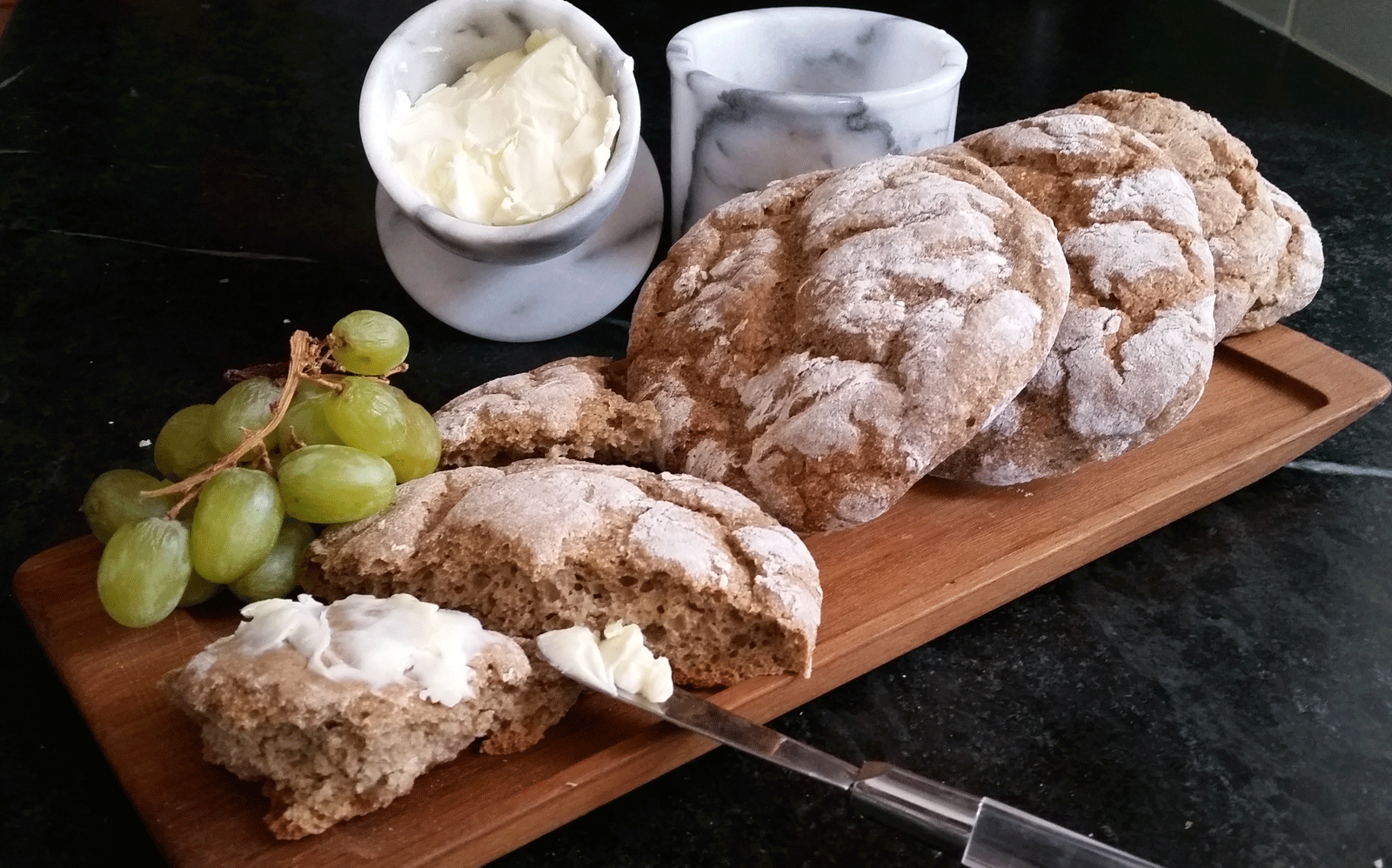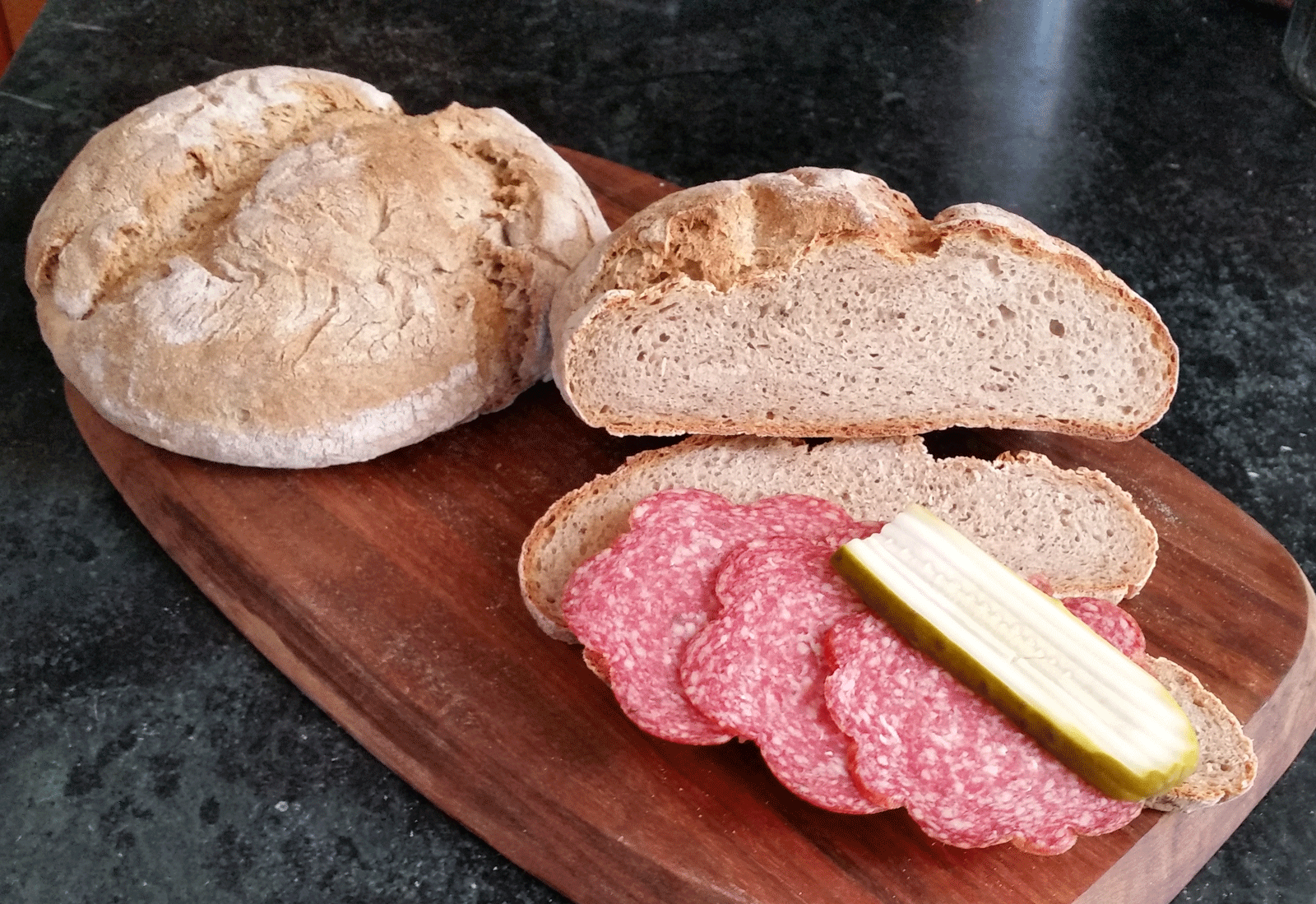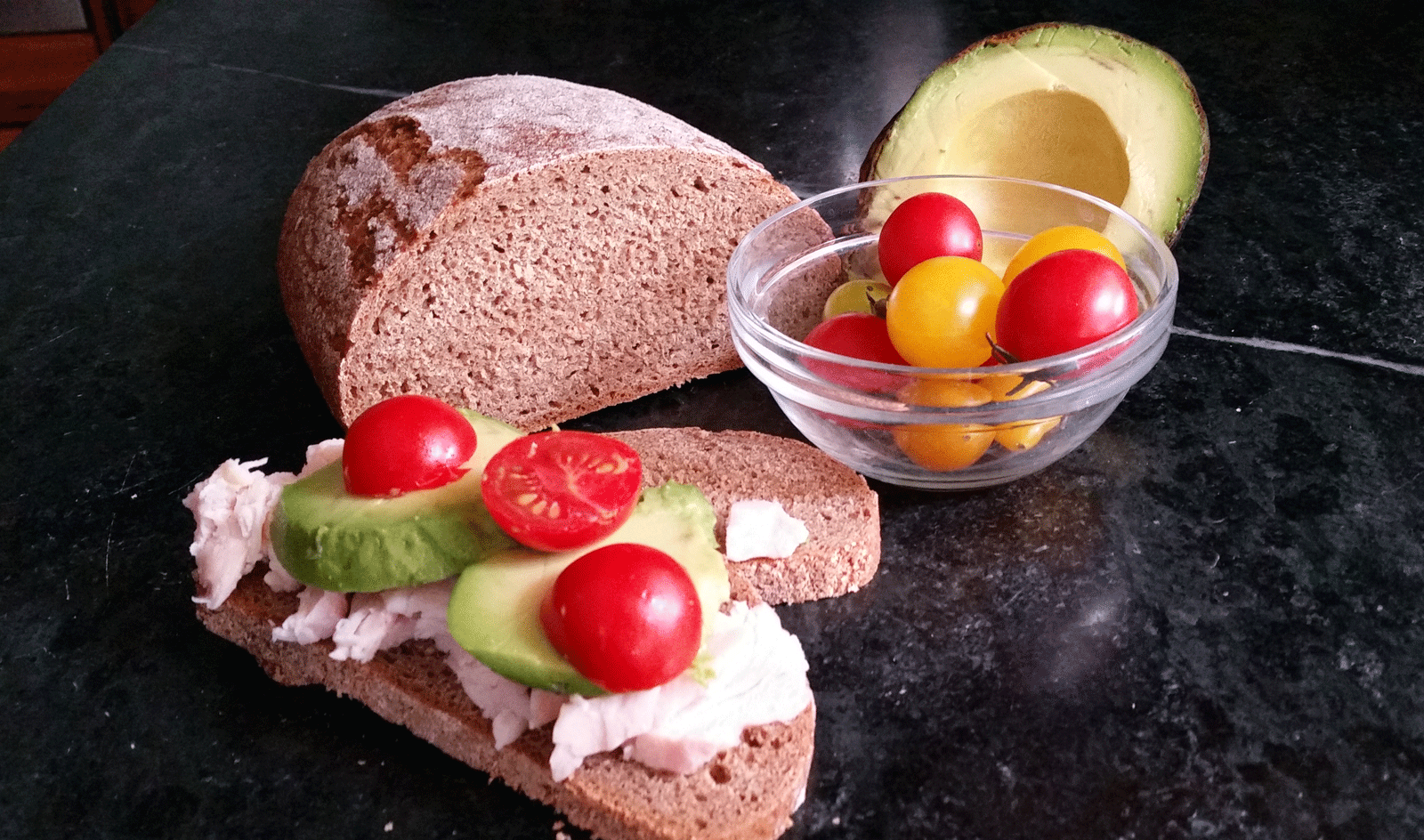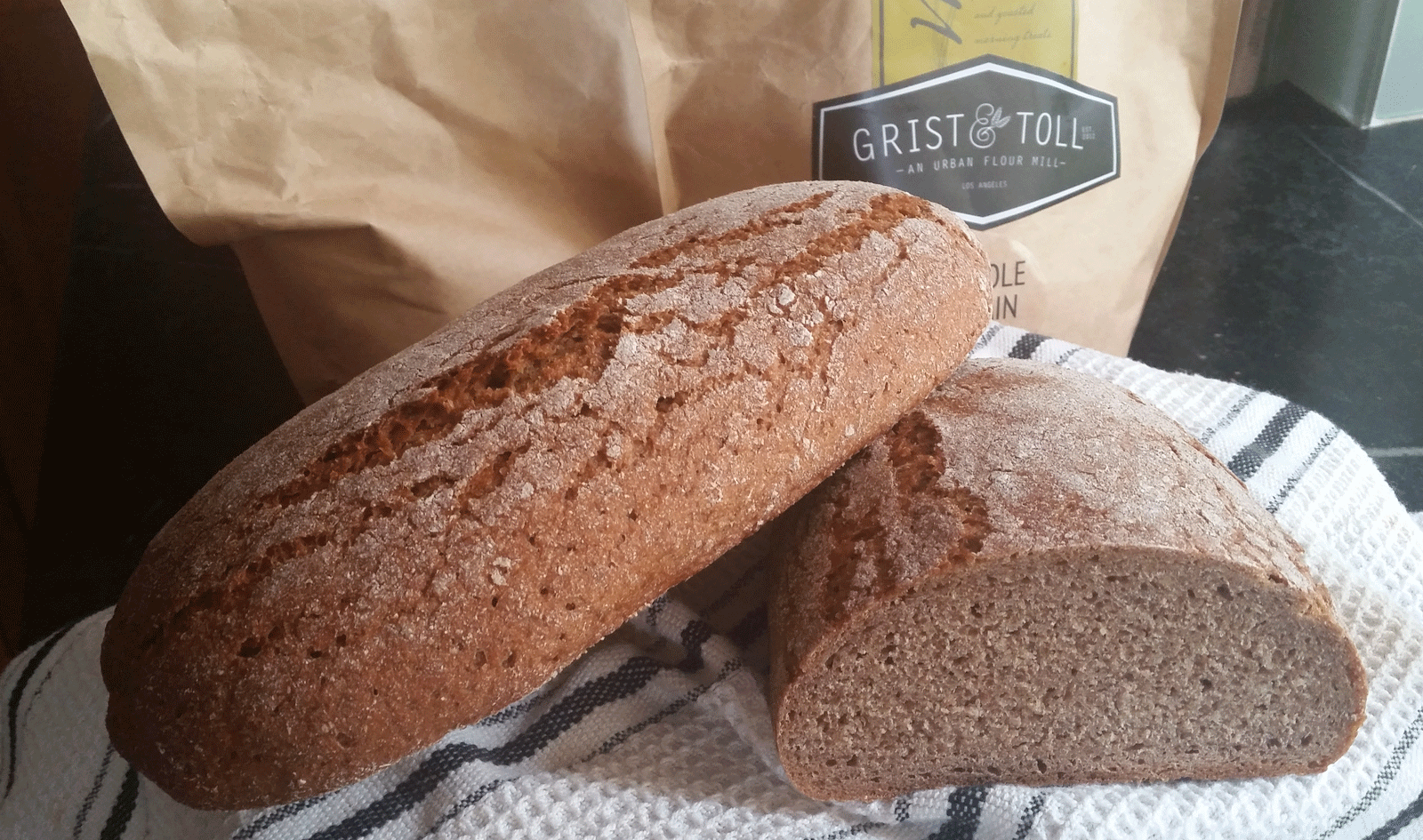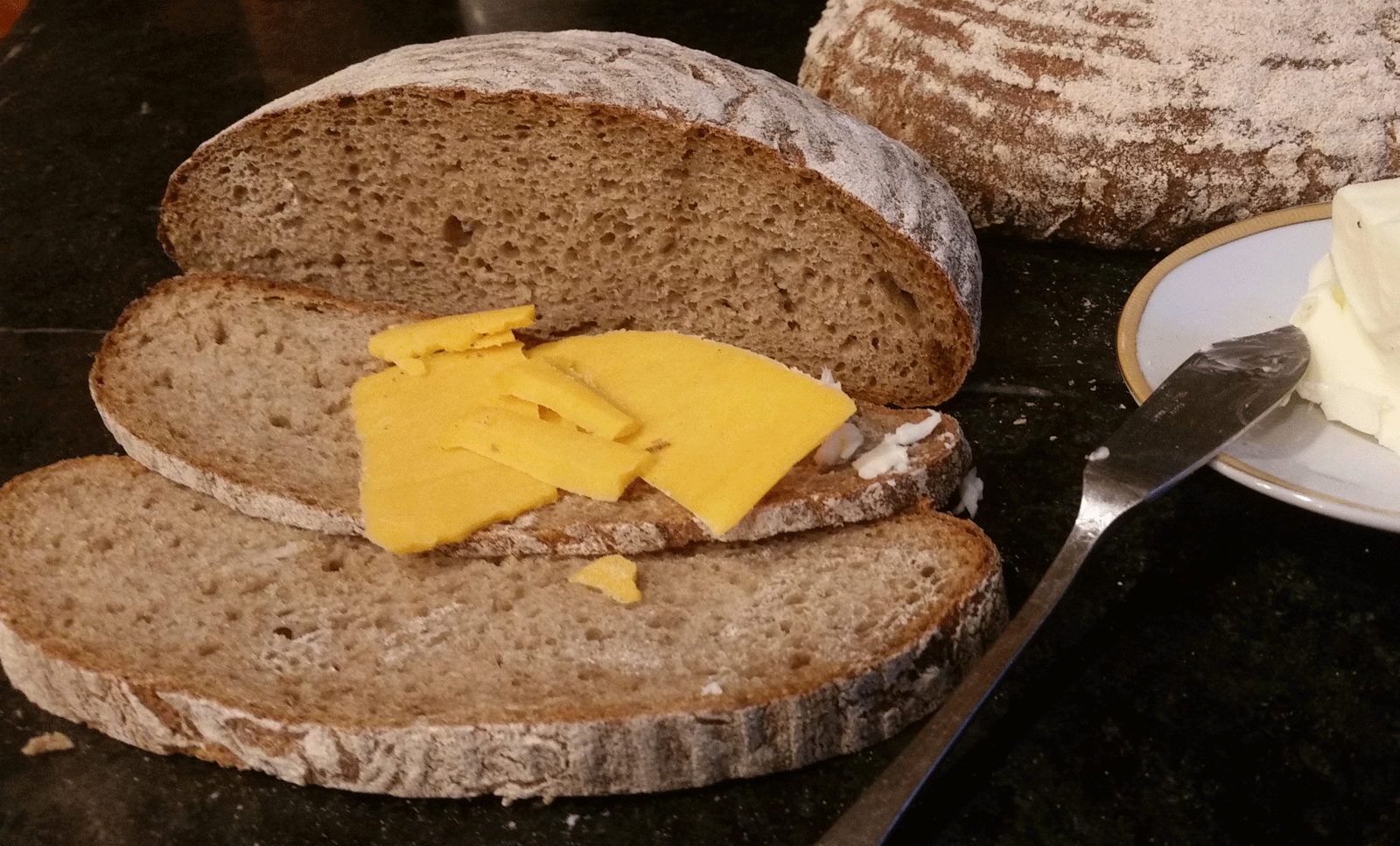Alpine rye
A Coast-to-Coast South Tyrolean (Merano) Rye/Meraner Striezl
| Rye %: | 61% |
| Stages: | 2-stage rye sponge, Wheat sponge, Soaker, Final dough |
| Leaven: | Rye sour culture |
| Start to Finish: | 26-30 hours |
| Hands-on Time: | 45-60 minutes |
| Yield: | Two 28 oz/800 g loaves |
If there’s a rye bread equivalent of the Perfect Storm – that is, when all the ideal conditions come together at the same time – this bread is it. Start with the formula for a classic South Tyrolean Merano Rye from Austrian master baker/blogger Dietmar Kappl, then use it to showcase two spectacular artisan flours – California-grown Abruzzi rye from Grist & Toll and organic heritage emmer from Maine Grains – and you come up with a bread that’s very, very special.
Tegernsee Christmas Loaf/Tegernseer Ketzapiren
| Rye %: | 100% |
| Stages: | Straight dough |
| Leaven: | Baking powder |
| Start to Finish: | 1½-2 hours |
| Hands-on Time: | 20-30 minutes |
| Yield: | One 2 lb./900 g loaf |
Marking religious holidays and life events by enhancing everyday bread with rare delicacies goes back a long way in Europe. The tradition survives most clearly in the stollen of Germany, the panettones of Italy, Lithuania’s Kaledu Pyragas (Christmas Bread), the zelten of South Tyrol and in this richly fruited Ketzapiren, which comes from Tegernsee in the Bavarian Alps, not far from the Austrian border.
“Little Breads” of Pustertal/Pusterer Breatl (Italy)
| Rye %: | 70% |
| Stages: | Sponge, final dough |
| Leaven: | Rye sour culture, yeast |
| Start to Finish: | 17-20 hours |
| Hands-on Time: | 30-40 minutes |
| Yield: | One dozen 3½ ox/100 g rolls |
Not too long ago, one of my friends, a transplanted Berliner, announced that he and his wife were going on vacation in the mountains of eastern Austria. The news came as music to my ears, because for a long time I’d been trying to get my hands on blue fenugreek leaves, a spice that’s virtually impossible to find in the US. Known as Trigonella caerulea (blue trefoil) to botanists, it’s a key ingredient in the breads of South Tyrol, where it’s variously called Blauklee (“blue clover”), Schabzigerklee (“shoddy clover”), Zigeunerkraut (“gypsy herb”) and Brotklee (“bread clover”). I asked if he’d be kind enough to pick some up for me.
“Closing Time” Dark Caraway Rye/Dunkles Feierabendbrot mit Kümmel (Austria)
| Rye %: | 53% |
| Stages: | Sponge, Final dough |
| Leaven: | Rye sour culture, Yeast |
| Start to Finish: | 15-17 hours |
| Hands-on Time: | 30 minutes |
| Yield: | Two 1 lb. (475 g) loaves |
Ever since I acquired my copy of Der Duft von Frischem Brot (The Aroma of Fresh-baked Bread), I’ve been hooked on Austrian ryes, which, like so many Alpine ryes I’ve encountered, have wonderfully complex and interesting flavor profiles. This caraway rye is no exception. It’s a creation of third-generation baker Johannes Breuss, of Oberdorf, a town nestled in the high Alps of Vorarlberg, Austria’s westernmost region, where it’s bordered by Bavaria, Switzerland and Liechtenstein.
Wholegrain Franconia Rye/Vollkorn Frankenlaib
| Rye %: | 80% |
| Stages: | 3-Stage sponge, Final dough |
| Leaven: | Rye sour culture |
| Start to Finish: | 20-22 hours |
| Hands-on Time: | 40-50 minutes |
| Yield: | Two 1½ lb./650 g loaves |
Not too long ago I acquired a trove of freshly milled rye and heirloom/heritage wheat flours from Grist & Toll, a groundbreaking urban mill in Pasadena, just north of Los Angeles. After experimenting with the wheat flours, I started casting about for a rye bread that would let me showcase the subtle complexities of the G&T flours. After going through my recipe database, I settled on Franconia Rye/Frankenlaib, a subtle and complex Bavarian bread.
Crusty Country Rye/Bauernkrustenbrot (Austria)
| Rye %: | 66% |
| Stages: | Sponge, Soaker, Final dough |
| Leaven: | Rye sour culture, Yeast |
| Start to Finish: | 15-17 hours |
| Hands-on Time: | 25-30 minutes |
| Yield: | Two 1½ lb./675 g loaves |
Austrian rye breads are less well-known than their German cousins, which is a shame because they’re incredibly flavorful. I found the recipe for this well-balanced nutty-sweet-sour country loaf in probably the best of the Austrian bread books, Der Duft von frischem Brot (The Aroma of Fresh-Baked Bread) by Barbara van Melle. The recipe itself comes from Vienna baker Horst Felzl, who, had he been 2 cm taller, as the book states, and qualified for the police academy, would never have become one of Austria’s best bakers.

